Gone are the days of calling brokers, paying them high fees for simple trades, and waiting a long time for execution. Today, automated systems handle the absolute majority of trades worldwide. According to some estimates and algorithmic trading, including high-frequency trading, accounts for more than half of all equity trading in the US.
High-frequency trading (HFT) has become a pivotal force in modern financial markets, enabling transactions to occur in microseconds. These systems leverage sophisticated algorithms aligned with traders’ strategies, facilitating rapid decision-making and the execution of advanced trading tactics. The HFT market is experiencing significant growth; according to Proficient Market Insights, it was valued at approximately USD 10.87 billion in 2024 and is projected to reach USD 17.59 billion by 2031, exhibiting a compound annual growth rate (CAGR) of 11.8% during the forecast period. This expansion underscores the increasing adoption of cutting-edge technologies and the pursuit of speed optimization in trading operations.
Are you interested in developing your own high-frequency trading system? If so, then let’s explore the specifics of such systems and learn some comprehensive information about automated trading software development from HFT software engineers.
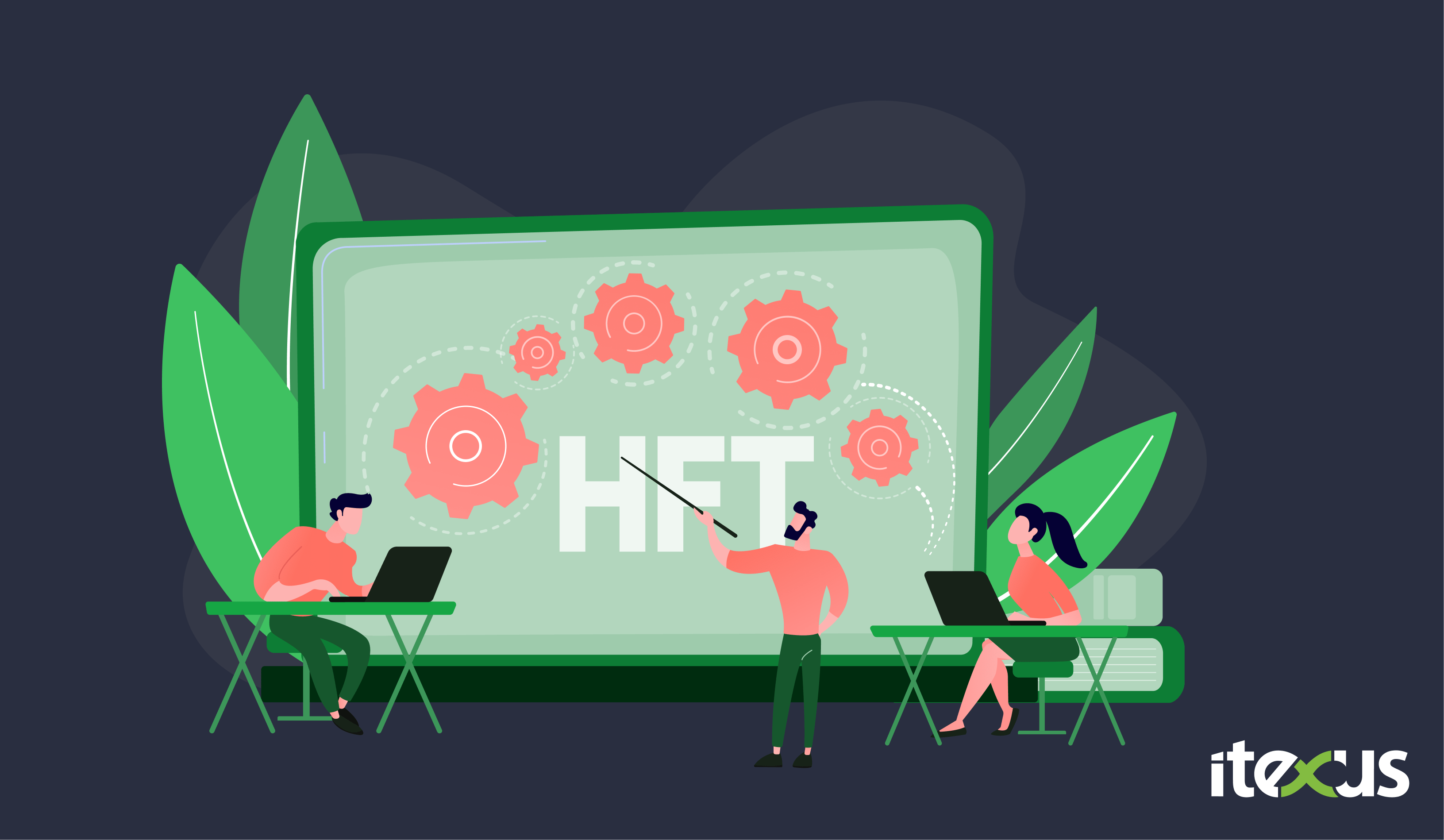
Peculiarities of High-frequency Trading (HFT)
An effective HFT system should be keeping with the following criteria:
✔️ A rapid exchange of capital – for traders, even a few microseconds count.
✔️ A large number of transactions – a lot of transactions are realized during the same day of execution.
✔️ Low profit per transaction – with the help of the Particle Swarm Optimization algorithm the system focuses on following the best possible strategy with guaranteed profit.
✔️ Financial instrument positions neither accumulated from one trading day to another nor avoided – the trading system can automatically enter buy/sell orders and maintain the positions from one day to the next.
✔️ Trading through a computer system – algorithms execute the decision-making process and investment strategies rely on data from statistics, economics, and AI.
High-Frequency Trading Strategies
HFT traders use various strategies to make money. Market participants take advantage of Big Data by using fast software with optimized connectivity and smart algorithms. In this context short-lived tactics, strict risk management, the use of public information, and sophisticated technologies characterize HFT strategies. Let’s explore the key strategies for developing a high-frequency trading platform.
Market making
A number of market-making strategies aim to exploit the bid-ask spread by placing limit orders. In this case, the return is the difference between bids and offers. When market makers are selected for the next trading round, they can replace the executed limit orders, one or both at a time, with the new orders at the best available prices.
In the literature, we find two types of market-making models – inventory-based and information-based. Inventory models deal with the effective management of inventories – when and what orders of assets should be placed, what are the constraints on time, money, production, and storage capabilities, etc. The second group of market-making models focuses on extracting information that other market participants have by analyzing buying and selling flows and the order book.
Arbitrage
Arbitrage is another popular set of HFT strategies based on predicting price differences between the same assets across different exchanges. For example, arbitrageurs exploit market inefficiencies – the price differences between a bond, the rates of a foreign currency, and futures contracts on that currency.
Structural strategies
Structural strategies aim at exploiting structural weaknesses of the market or weaknesses of certain market participants. If some traders have access to more sources of information, they can exploit this and trade executions at outdated prices on trading venues.
Latency arbitrage and flash orders are examples of structural strategies. The first refers to the delay between the instructions you give and the time period for their execution. Flash orders mean that a trader has the opportunity to see large orders before they reach the general marketplace.
Directional strategies
Directional or momentum trading is about building a position to follow the price momentum and bet on whether the price will move up or down.
Directional strategies include news-based trading, where the trading software analyzes information from news sources, liquidity detection, and momentum trading, where traders anticipate short-term market directions by detecting market participants’ order flow or new information.
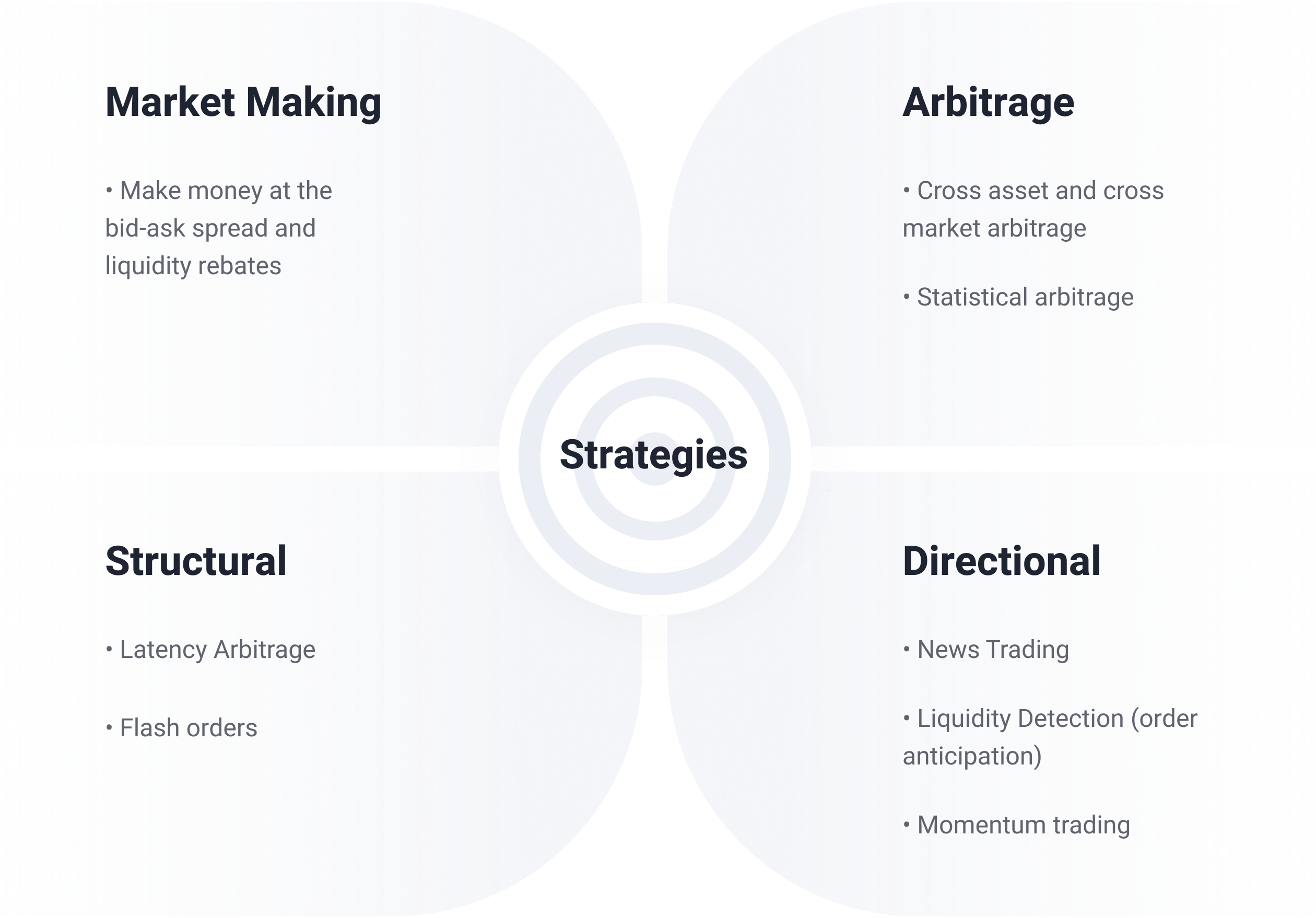
Development Scope of High-Frequency Stock Trading (HFT) System
Trading platform software development involves a lot of work and investment. Let’s explore the core functionality of an HFT system and the amount of work involved.
1. Authentication
The authentication part implies enabling users to sign in and out of the system using certain credentials.
2. Trading screen
Working on the trading screen includes trading window management and making a calibrator for users to set the parameters for trading sequences and positions.
- Trading window management
When managing a trading window, the user must be able to select an index, the number of orders, and a currency.
- Calibrator
A calibrator is a cornerstone on a trading screen. It includes several calibration panels and gives the users the opportunity to calibrate buy or sell limits/hedge sequences, to open positions by using sets of parameters.
- Max loss order
Max loss order is an always-active function that helps to limit losses and protect profits. When a max loss order is triggered, a trading platform turns off.
- Account overview
An account overview displays the user’s balance, day trade results, last trade results, and a service fee.
- Open positions
Open positions should display the difference between long and short open positions so that the user can view and consolidate them into a single open position, and get the positions organized in chronological order.
- Netting positions
The feature of netting positions allows users to offset multiple financial obligations in order to compensate for losses in some positions with gains in other ones.
- Daily turnover
With the help of the daily turnover element, users can see the total trading volume for the day.
- Order book
An order book allows the user to view an organized list of orders and carry out the main manipulations: to open, close, cancel, consolidate, view orders, and select indexes.
- Trade log
The user gets an opportunity to observe the trade log, a transaction history. The information covers the assets and directions, the number of contracts, types, prices, and time.
3. Account
The user should be able to create and manage an account on the platform. Trading platform accounts are linked to brokerage accounts. The users’ accounts should be protected from unauthorized access. To enhance security, users undergo a KYC identification process that includes such steps as face and document verification.
4. Trading
The trading feature means that the user can get the market data and place, cancel, or remove orders.
5. Algorithm implementation
To implement a working algorithm, the team creates and activates sequence orders. These can be set to execute at the market’s best price or as a limit order. The next step is defining the gap between orders and setting protective measures. Positions/orders in a sequence can be manually closed without canceling the entire sequence. A hedge function is also activated, factoring in the sequence results. Users can test the algorithm with historical data provided by the broker.
On average, such a project takes about four months. The timeline depends on the team’s size, structure, and workload. Developing the authentication system, trading screen, account management, and UI design costs approximately $45,000. Algorithm implementation and backtesting require an additional $15,000.
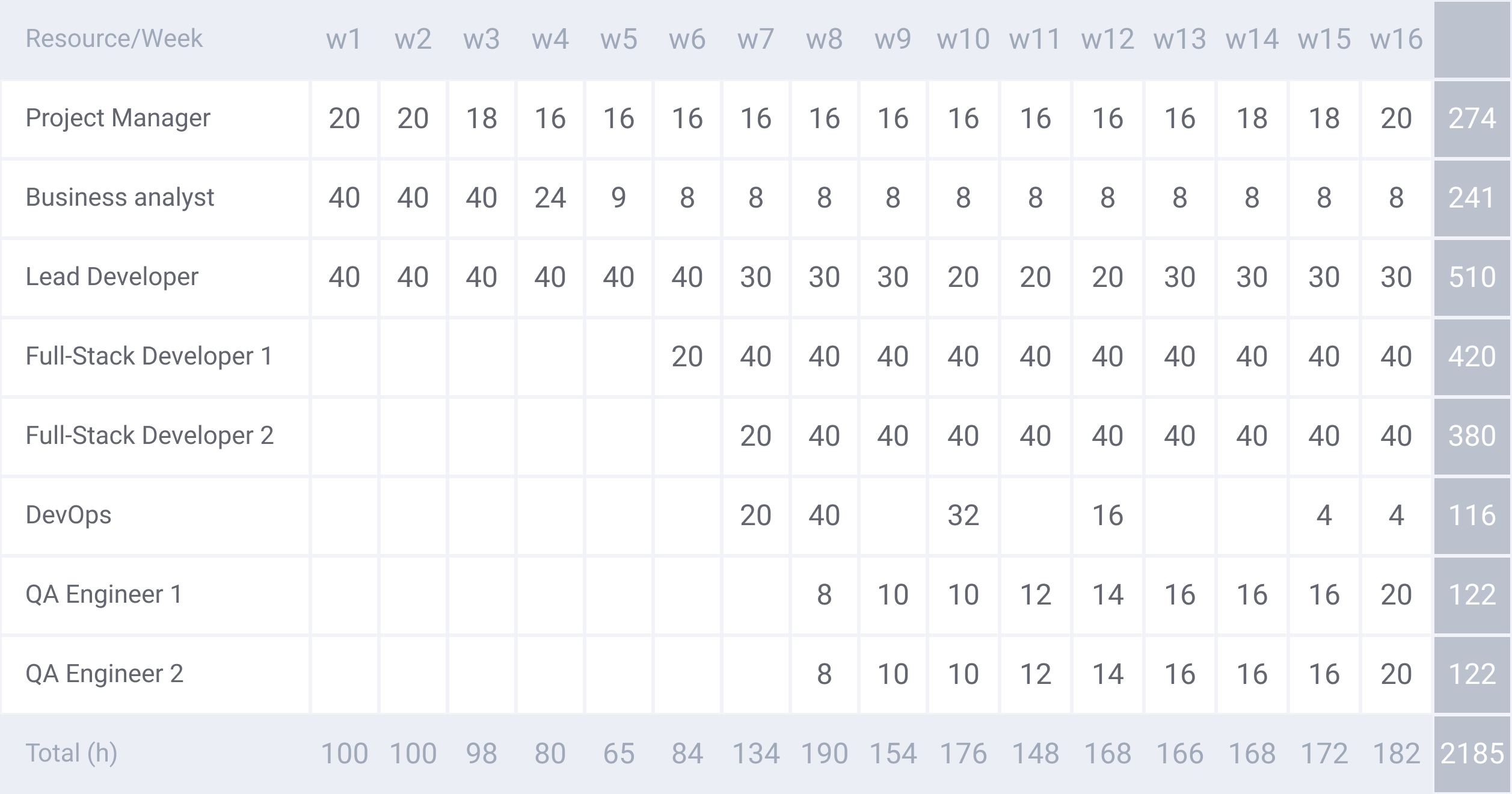
Where to Start to Build an HFT System?
The work on building a credible HFT system begins with selecting the right contractor. Let’s establish the key selection criteria.
✅ Domain experience
When selecting potential candidates to hire HFT developers, pay attention to their portfolios and specifications. A company that is supposed to provide high-frequency trading software engineers for a project must have relevant experience to translate your requirements into a competitive product.
✅ Reputation
Your trading system must have an impeccable reputation if you want traders to trust you with their money. Therefore, you should choose a contractor with a good reputation and positive reviews.
✅ Discovery phase as a service
Conducting a discovery phase is necessary to thoroughly research the project, specify requirements, and carefully plan further work. When a contractor provides the discovery service, you are most likely to get the best possible solution analysis and a dedicated team that understands your idea and is determined to implement it.
✅ Post-development support and maintenance
Developing the desired solution is only half the battle. The other half is the further support and maintenance of the system. Therefore, you should find out in advance about the vendor’s terms for post-development support.
✅ Rates
When it comes to the cost of HFT system development, you should understand that work on such a scale cannot be cheap. Apart from the number of features to be delivered, the process requires high quality of the whole solution and its further support. However, we do not encourage you to overpay for world-known names that do not necessarily guarantee high quality. Try to find the right balance between cost savings and ensuring high standards.
Algo Trading System Development – Itexus Expertise
Itexus has a proven track record in the fintech domain. Financial management companies choose us as a development partner for a comprehensive approach and experience with high-load real-time applications. We are proud to share a few of these projects with you.
Algorithmic Intraday Stock Trading System
For a wealth management company with 20 years of experience and its own active stock trading strategy, we developed an algorithmic stock trading system that automates trading strategy and operations. The system enables its users to make lightning-fast trading decisions that pay off with the help of AI-based prediction modules and automated operations. To ensure this, the system uses complex analytics, opens and closes positions according to the strategy, and monitors activity in real time. With the new solution, our client has been able to reduce operating costs by cutting staff and scale the business, giving thousands of end customers access to smart trading. For more details on this project, see the case study.
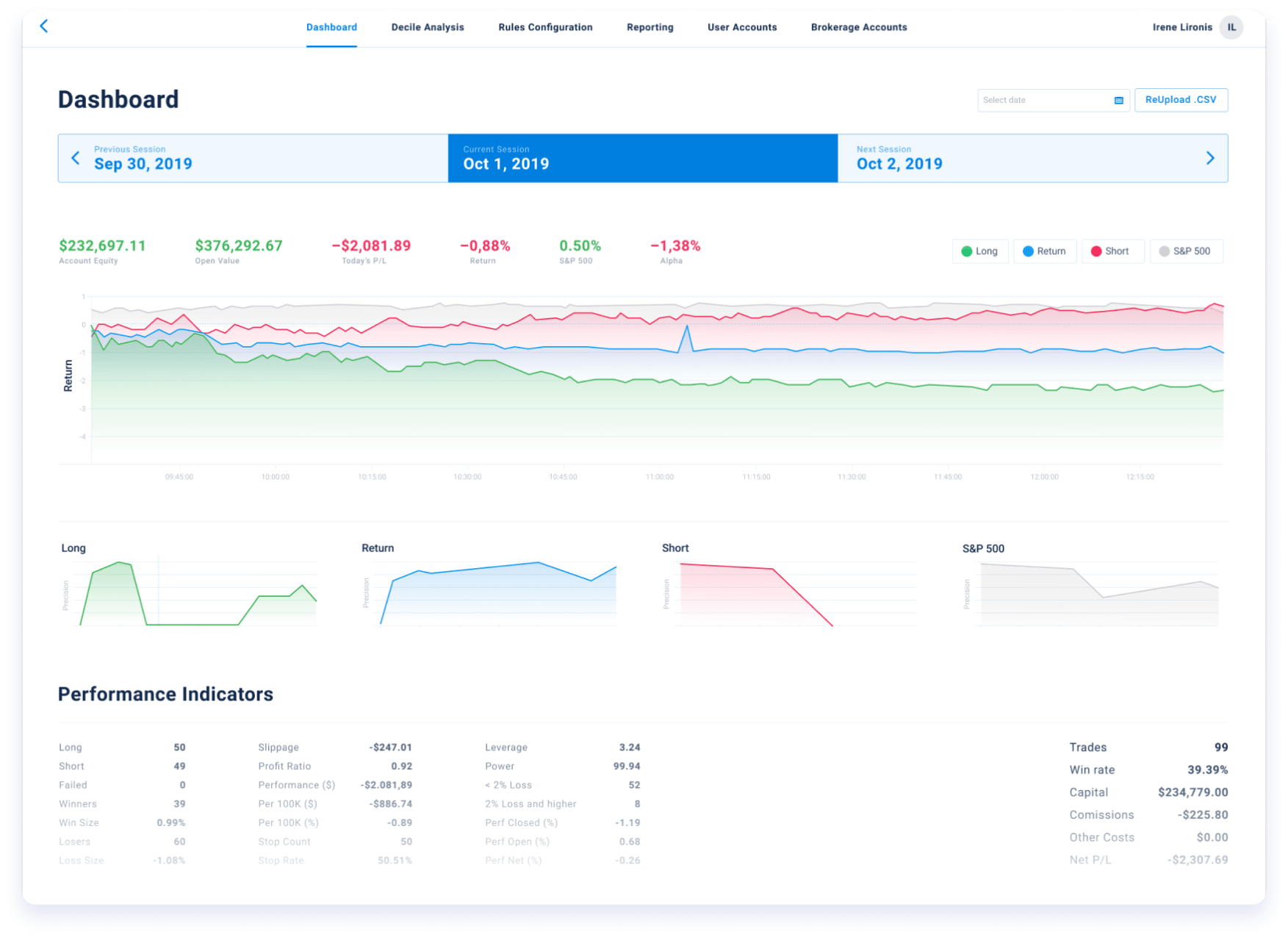
Stock Trading Bot
We developed a stock trading bot for an investment company that specializes in active stock trading. It is a cloud-based application that connects to a brokerage account via an API. The bot automates stock trading by executing trades based on predefined requirements. The bot tracks stocks throughout the day, looking for indications as to when it should buy, and executes the trade once the preset buy parameters are met. Conversely, the bot executes a sell order once all sell parameters are met. For more details on this project, see the case study.
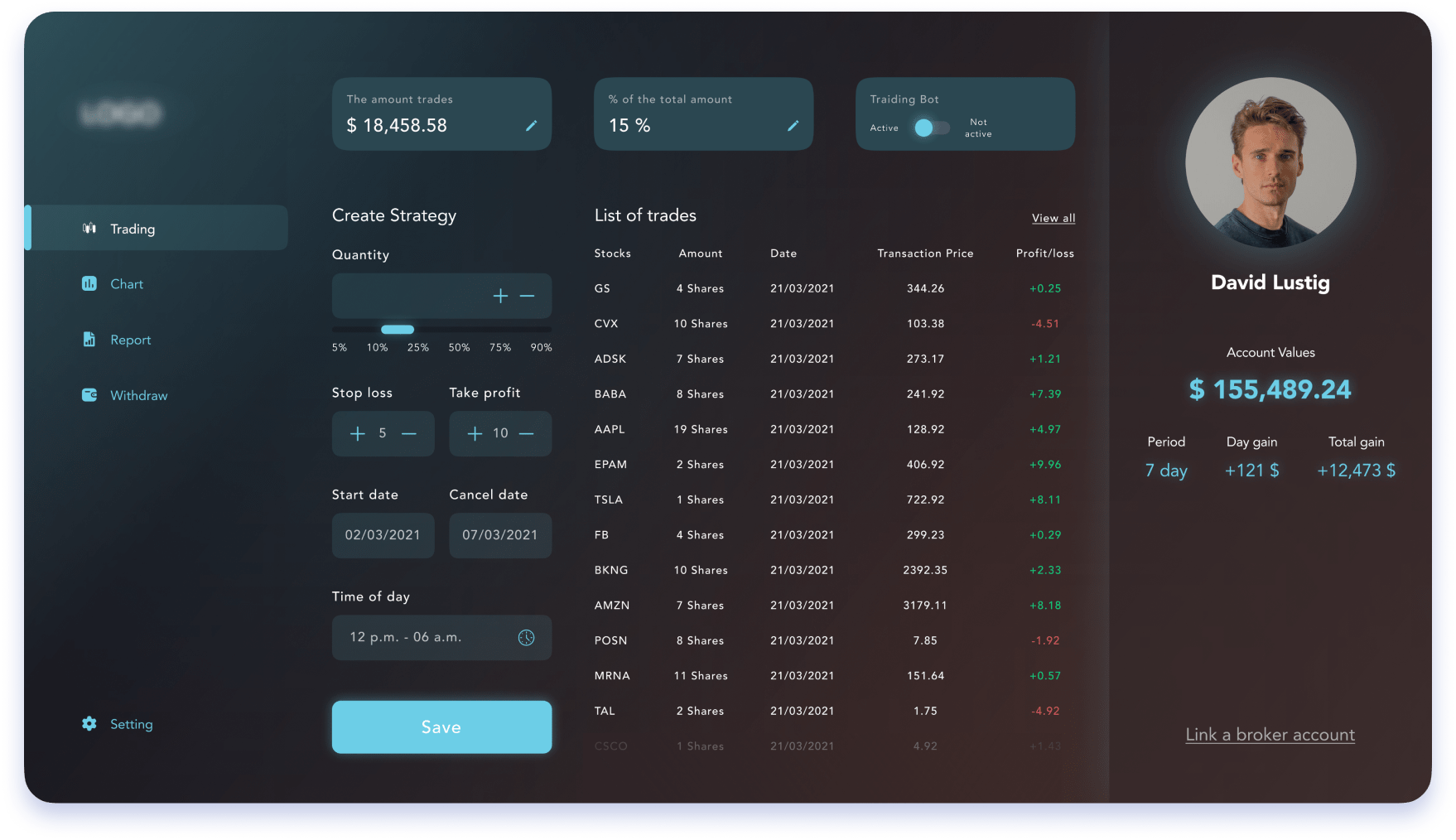
Automated Stock Trading Platform
An investment management company providing services to both individual and institutional investors entrusted us with automated stock trading software development. We delivered an algorithmic trading system based on a complex, multi-level analysis of prices and the behavior of their derived characteristics. The system allows the administrator to set up trading strategies with different market instruments and backtest them with data from different financial markets and time frames. More details about this project can be found in the case study.
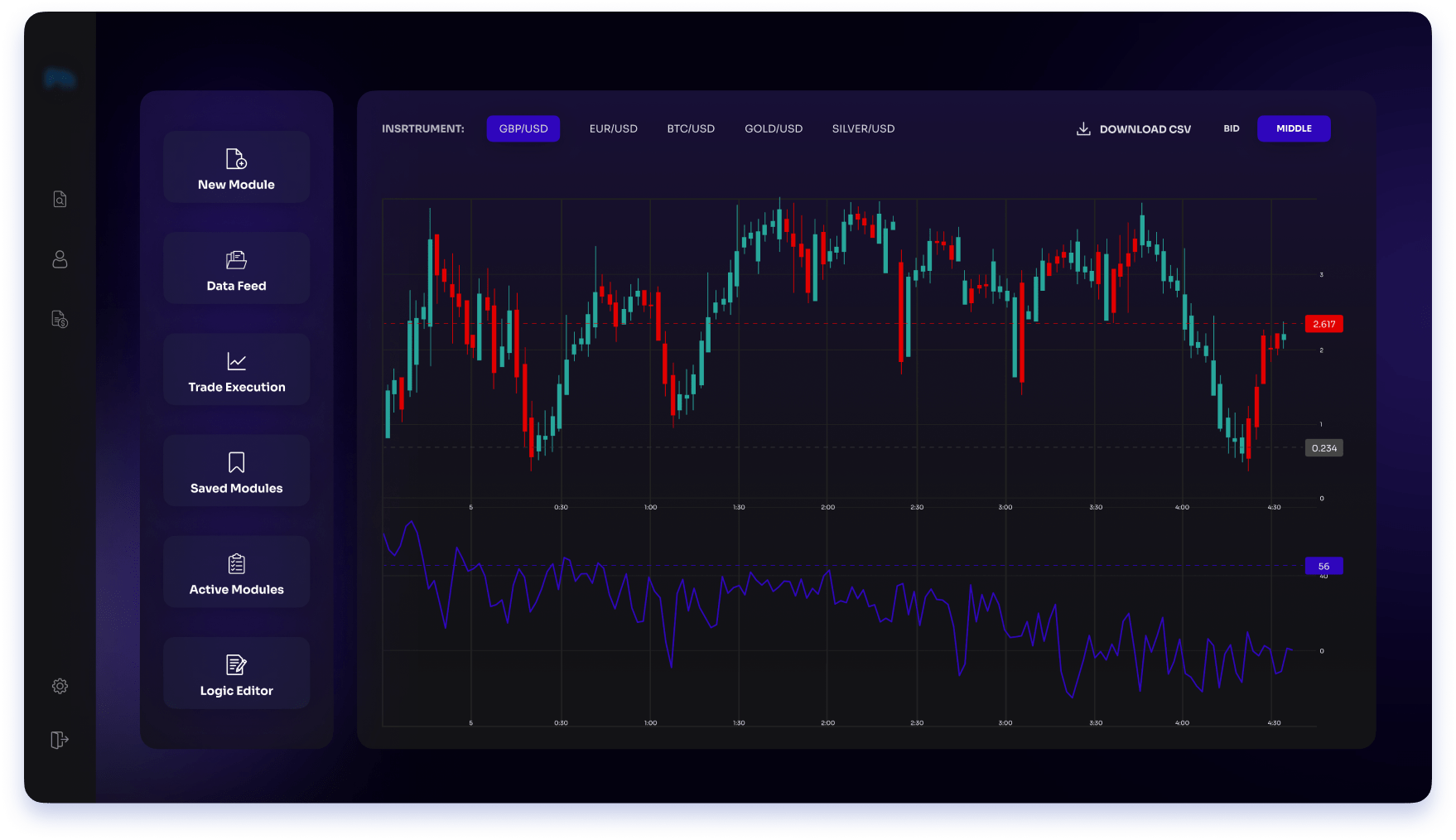
Summary
High-frequency trading (HFT) systems revolutionize markets by executing trades in microseconds using advanced algorithms. Key strategies like market making, arbitrage, and directional trading leverage data and speed for optimal performance. Developing an HFT platform involves creating robust features, including authentication, trading screens, and algorithm implementation, requiring domain expertise and ongoing support. If you are determined to hire such a team, you can count on our HFT developers, software architects, UI/UX designers, financial experts and DevOps engineers with solid experience in the FinTech domain. Contact us to turn your HFT concept into a powerful solution.